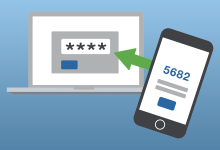The Power of Artificial Intelligence in Cybersecurity: Exploring the Benefits and Challenges

As technology advances, so does the need for increased cybersecurity measures. With cyber-attacks becoming more sophisticated, businesses and organizations are turning to artificial intelligence (AI) to help combat these threats. In this article, we’ll explore the benefits and challenges of incorporating AI into cybersecurity.
Introduction to Artificial Intelligence in Cybersecurity
Artificial intelligence is the ability of machines to learn and perform tasks that would typically require human intelligence. In cybersecurity, AI can be used to identify and mitigate potential security threats. By analyzing large amounts of data, AI can identify patterns and anomalies that humans may not be able to detect.
What is Artificial Intelligence?
Artificial intelligence refers to machines that can perform tasks that typically require human intelligence, such as learning, reasoning, and problem-solving. AI can be broken down into two categories: narrow AI and general AI. Narrow AI is designed to perform specific tasks, while general AI can perform any intellectual task that a human can.
AI technologies include machine learning, natural language processing, and computer vision. Machine learning is the process of training a machine to learn from data, while natural language processing enables machines to understand and interpret human language. Computer vision allows machines to “see” and interpret visual data.
The Benefits of Incorporating AI into Cybersecurity
One of the primary benefits of incorporating AI into cybersecurity is its ability to automate threat detection and response. By analyzing large amounts of data, AI can quickly identify potential security threats and respond in real time. This can help prevent attacks before they occur and minimize damage if an attack does occur.
Another benefit of using AI in cybersecurity is its ability to adapt to new threats. As cybercriminals develop new tactics, AI can quickly learn and adapt to these new threats. This enables organizations to stay ahead of potential threats and mitigate them before they can cause significant damage.
AI Cybersecurity Statistics
According to a report by MarketsandMarkets, the global AI in cybersecurity market is expected to reach $38.2 billion by 2026. This represents a compound annual growth rate of 23.3% from 2021 to 2026. The report also notes that the increasing number of cyber threats and the need for real-time threat detection are driving the growth of the AI in cybersecurity market.
The Challenges of Using AI in Cybersecurity
While AI has many benefits in cybersecurity, there are also several challenges that need to be addressed. One of the primary challenges is the lack of transparency in AI systems. As AI becomes more complex, it can be challenging to understand how it arrived at a particular decision. This can make it difficult to identify and fix errors in the system.
Another challenge of using AI in cybersecurity is the potential for bias. AI systems are only as unbiased as the data they are trained on. If the data used to train an AI system is biased, the system will also be biased. This can lead to incorrect decisions and potentially harmful outcomes.
Promoted contents:
How AI is Being Used in Cybersecurity Today
AI is being used in cybersecurity in a variety of ways, including threat detection, threat response, and network security. Machine learning algorithms are used to analyze large amounts of data to identify patterns and anomalies that could indicate a potential threat.
AI is also being used to automate threat response. In some cases, AI can even autonomously respond to threats in real-time, without human intervention. This can help minimize damage and prevent attacks from spreading.
In terms of network security, AI can be used to monitor network traffic and detect abnormal behaviour. This can help identify potential threats before they can cause significant damage.
AI Cybersecurity Tools
There are many AI cybersecurity tools available on the market today. Some of the most popular tools include:
- Darktrace: a machine learning-based cybersecurity platform that uses AI to detect and respond to threats in real time.
- CylancePROTECT: AI-based antivirus software that uses machine learning algorithms to detect and prevent malware.
- IBM Watson for Cyber Security: an AI-based platform that uses natural language processing and machine learning to identify and respond to cyber threats.
Some Successful Example Cases Where The Power of Artificial Intelligence in Cybersecurity has been Implementations
One example of a successful AI cybersecurity implementation is the use of AI by the US Department of Defense (DoD). The DoD uses AI to detect and respond to cyber threats in real time. By automating threat detection and response, the DoD is able to quickly identify and mitigate potential threats.
Another example of successful AI cybersecurity implementation is the use of Darktrace by the UK National Health Service (NHS). Darktrace was used to detect and respond to a ransomware attack on the NHS in 2017. By detecting the attack early, Darktrace was able to prevent the spread of the ransomware and minimize the damage caused.
The Future of AI in Cybersecurity
As AI continues to advance, its role in cybersecurity is only going to become more important. AI has the potential to revolutionize the way we approach cybersecurity, making it more effective and efficient. However, as AI becomes more complex, it’s important to address the challenges associated with its use, such as transparency and bias.
Conclusion
Artificial intelligence has the potential to transform the way we approach cybersecurity. By automating threat detection and response, AI can help prevent attacks before they occur and minimize damage if an attack does occur. However, there are also challenges that need to be addressed, such as transparency and bias. As AI continues to advance, it’s important to ensure that it’s used ethically and responsibly to protect our digital assets.








